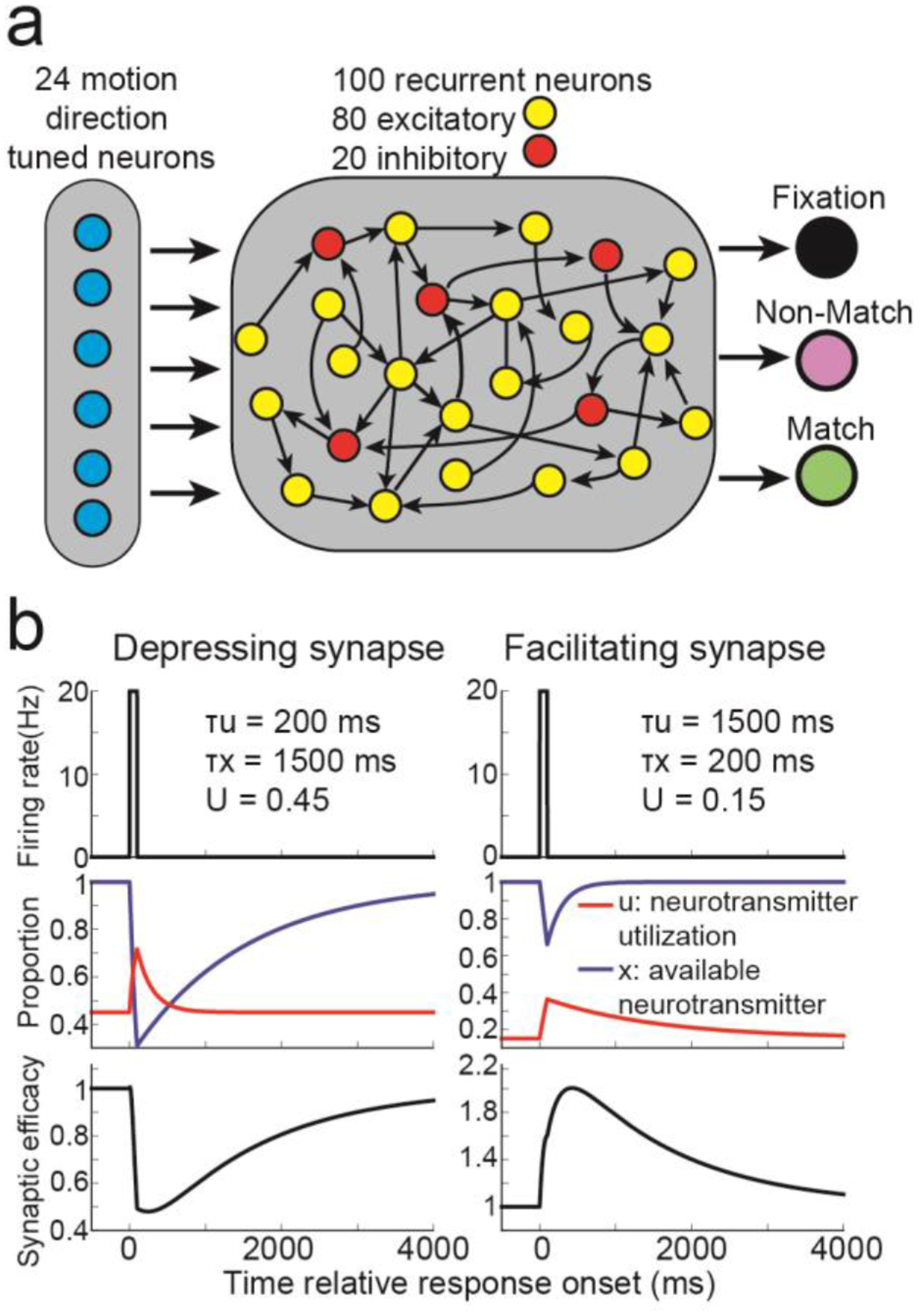Figure 1. RNN design.

(a) The core rate-based model consisted of 24 motion direction tuned neurons projecting onto 80 excitatory, and 20 inhibitory, recurrently connected neurons. The 80 excitatory neurons projected onto three decisions neurons. (b) For synapses that exhibited short-term synaptic depression (left panels), presynaptic activity (top panel) weakly increases neurotransmitter utilization (red trace, middle panel) and strongly decreases available neurotransmitter (blue trace), decreasing synaptic efficacy (bottom panel). For synapses that exhibited short-term synaptic facilitation (right panels), presynaptic activity strongly increases neurotransmitter utilization and weakly decreases available neurotransmitter, increasing synaptic efficacy.
